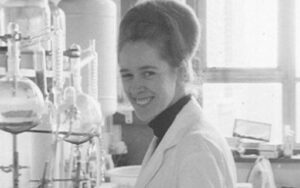A Controversial New Treatment for Infertility
In April 2019, a young woman in Greece gave birth to a baby who had not two parents, but three, due to the use of mitochondrial replacement therapy.
How and why this was done raises ethical concerns, but the revolutionary technique offers hope to women who carry mitochondrial DNA diseases.
Mitochondrial Replacement Therapy
People have two types of DNA in their cells, nuclear DNA, which is inherited from both parents, and mitochondrial DNA (mtDNA), which is inherited only from the mother. Mutations in mtDNA are fairly common, but mitochondrial diseases are rare, found in 1 out of 5,000 people. For some couples, preimplantation genetic diagnosis (PGD) with IVF are an option to select embryos with low levels of mutation. If the mother has high levels of mutated DNA, however, there aren’t healthier embryos to transfer.
Mitochondrial replacement therapy (MRT) involves using an egg from an egg donor who doesn’t have mutations. The nucleus of the egg is removed and replaced with the nuclear DNA from the woman who has mitochondrial DNA mutations. The egg is then fertilized with the father’s sperm in the embryology lab. If it grows into an embryo for transfer during IVF treatment, the embryo would be free of mitochondrial disease.
This technique was used in Mexico in 2016 to avoid transmitting a mother’s hereditary disease to her child. It has been approved for use in the U.K., strictly to prevent genetic disease. Australia and Singapore are considering the technique but have not approved it yet. MRT has been banned in the U.S. since 2015 by a piece of legislation. Most scientists believe the technique should be studied.
Ethical Controversy
Ethical concerns arose over the use of this new therapy with the Greek woman because she was not a carrier of mitochondrial disease. She had had four unsuccessful IVF attempts when the medical team offered her this option.
There is considerable disagreement about MRT. Is it just another advancement in IVF, or is it sliding down the slippery slope to gene editing? The law passed in 2015 banned all germline modifications, which includes all genetic engineering on eggs, sperm or embryos, and any modifications that would be passed down to future generations. Thus it bans MRT, even though mitochondria only hold about 0.1 percent of a person’s DNA.
Many experts have expressed concerns about safety of the technique as well. There has been very little animal testing, much less human tests, and only two babies have been born from MRT. Most scientists don’t want unregulated MRT, and view the regulatory approach in the U.K. to be a model for safely exploring the treatment. Two leading researchers published a commentary in Obstetrics and Gynecology proposing a path forward for MRT research. It seems clear that the technique will not be researched or available in the U.S. in the short term. But perhaps well-regulated studies in the U.K. or other countries will help to raise interest in easing the ban on MRT research.




